Return-to-Work Essentials
The ultimate resource for beginner-to-advanced Work Comp pros looking to return injured employees back to work quickly, safely, and cost-effectively.
Return-to-Work Essentials is full of insights and strategy for professionals looking to hone their current skills and get up to speed on the latest Return-to-Work (RTW) policies and best practices. If you’re a corporate risk manager, business owner, WC program manager, insurance broker, service provider or agency, implementing our proven strategies & tactics will help you lower costs and achieve better outcomes.
Scroll through the sections below to build or refine your RTW policies and plans without the hiccups, headaches, and extra expense that arise from doing it alone.
- What is Return-to-Work?
- Who Uses Return-to-Work?
- Why Does Return-to-Work Matter?
- BUILD YOUR RTW PROGRAM
RTW Program Integrates with Loss Mgmt. Program
Most employers realize a properly constructed Return-to-Work (RTW) program can have a major positive impact on the cost of workers compensation. The question we often hear is “Okay, we want a successful return to work program, but how is it done?”
Achieving a proficient return to work program requires EFFORT on the part of the employer beyond placing the injured employee back into his/her previous job with instructions “not to pick up anything heavy.” A properly constructed RTW program must be integrated into the overall loss management program. In addition, it must include an effective transitional duty program and an early return to work program.
Click Link to Access Free PDF Download
“13 Research Studies to Prove Value of Return-to-Work Program & Gain Stakeholder Buy-In”
What is Return-to-Work?

Who Uses Return-to-Work?
When reviewing your best practices, it’s important for every employer to consider the development of a Return-to-Work policy. RTW is a complex issue that requires more than a mere moment of consideration, if you’re serious about reducing your WC costs and improving the outcomes for your injured workers. Doing so can and will substantially reduce your Workers’ Comp program costs.
Why Does Return-to-Work Matter?
To reduce the expense of Workers’ Comp insurance, your organization needs to have a long-term RTW strategy to reduce injuries, return injured workers as soon as possible, and ensure accuracy in its actual incurred losses.
Negative Consequences of Delayed Return to Work
From a human resources perspective, while it is jokingly everyone’s dream to stay at home and watch TV during the day, a vast majority of injured employees who do not have a return to work option demonstrate the negative psychological consequences of prolonged recovery times. For employers, having an employee off due to a work injury reduces workplace efficiency and is a hidden cost on the bottom line. An effective Return-to-Work program reduces costs and makes the workplace more efficient.
BUILD YOUR RTW PROGRAM
STEP 1:
Understand Your Current Injury Economics
From calculating your cost per full-time employee to determining your RTW ratio to knowing how many of your employees are out of work right now, this 3-part series of essential articles (plus additional calculators) provides you with the key factors to determine the true financial impact your workers’ injuries have on your bottom line.
STEP 2:
Construct a Strategy Template for Your Return-to-Work Program
A Return-to-Work program is the strategic foundation of the Workers’ Compensation concept. It’s the master template upon which every other aspect of your Workers’ Comp policies are developed, because it provides both injured workers and employers the best possible outcome regarding health and finances.
This 3-part series of articles (and video) will show you how to construct and manage a successful RTW program that will support all of your other Work Comp efforts.
How to Build Your Return to Work Program

ACOEM 3-Part Return to Work Framework
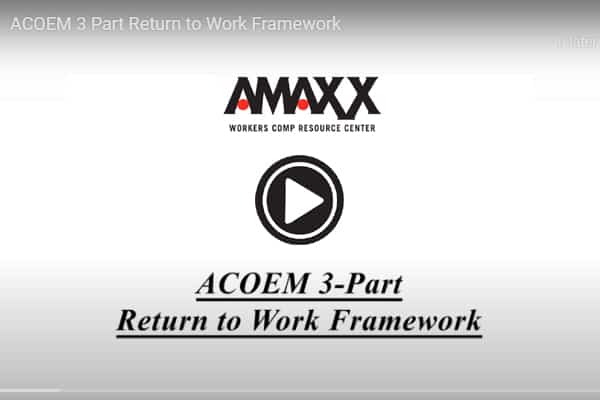
Ten Light Duty Work Ideas

STEP 3:
Establish Your Transitional Duty Program
For a transitional duty program to be effective, it needs to be properly established BEFORE it’s needed. These articles will help you learn why, how, and where a transitional duty position should be designed for every current job within your company, along with additional tips and examples of success.
Recent RTW and Transitional Duty Articles
Click arrows to scroll through our latest articles about RTW and Transitional Duty.
Pros and Cons of Return-to-Work
The “pros” of a Return-to-Work program will be the reduction of WC costs by 20% to 50% and the positive injured worker outcomes. The “cons” of a Return-to-Work program will be determined by how well your team communicates with your key stakeholders, including employees, claim adjusters, physicians, nurses, physical therapists, medical managers, insurance carrier administrators, and third party administrators.
Communication is Key to RTW Program Success
At the end of the day, to minimize the negative impact of worker injuries across the board, your RTW program has to be clear and applicable to all employees, which comes down to communication. The only real way to lower your workers’ compensation premium is to lower your experience modification factor.
FREE DOWNLOAD: “13 Research Studies to Prove Value of Return-to-Work Program & Gain Stakeholder Buy-In”
History of Workers’ Comp and Return-to-Work
In the early part of the twentieth century, “The Grand Bargain” was negotiated to provide injured workers “no-fault” compensation for economic losses associated with work-related injuries and deaths. The compromise gave birth to the legal notion that, in most cases, workers’ compensation is an injured worker’s exclusive remedy against an employer.

Workers Comp Grand Bargain and The 100 Year Old Lesson
The system wasn’t working for employees, and it wasn’t working for employers, either. Wild swings in these awards and most employees not being compensated for their injuries, so they created this system and came up with the grand bargain… READ MORE & WATCH VIDEO
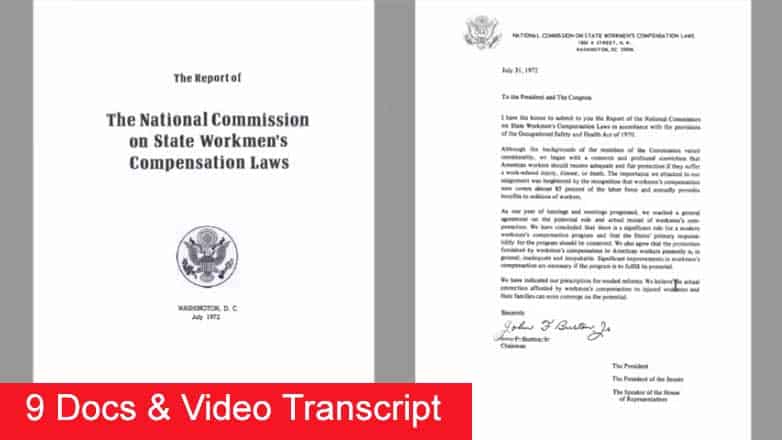
WC National Conversation: Political Influence, History, Current Major WC Issues
39 leading industry stakeholders—injured workers, employers, carriers, TPAs, injured worker’s attorneys, defense attorneys, medical providers, and state regulators—discuss important issues about where we are today and where we are going as an industry. WATCH VIDEO or READ TRANSCRIPT — DOWNLOAD DOCUMENTS
Covid-19 Issues for Return-to-Work
The COVID-19 pandemic is creating several challenges for members of the claim management team and other interested stakeholders. To overcome the challenge of effective claims handling, unlocking the power of technology and fostering an environment of responsiveness are key first steps. Manage any fear and anxiety within your organization through communication and expectations. Take the necessary steps to keep your employees safe, healthy and happy during the global health crisis.
For more information about this issue, visit the COVID-19 section of our blog.
RETURN-TO-WORK RESOURCES
RTW Courses, Certification, and Guidebook
Return-to-Work Tools
10 Tips to Improve Your Return to Work Program
Employers who successfully manage their workers compensation cost understand the importance of a strong Return to Work program. When an employee returns to work as soon as he is medically able, the indemnity payments are decreased, the medical and rehabilitation…
Surveillance and Its Proper Use In Work Comp Claims
In January, Democratic state Rep. Sal Pace of Colorado introduced a bill designed to significantly restricted the use of surveillance on workers’ compensation claims. The bill, endorsed by the plaintiff’s bar and labor unions, would make surveillance nearly impossible by…
Surveillance and Its Proper Use In Work Comp ClaimsRead More
Success Story: 4 Keys to 79% Workers Comp Cost Reduction
Trinity International Corp., a holding corporation for 89 other and various companies, recently reduced incurred workers’ compensation losses by 79%; medical costs by approximately 50% and 99% of injured employees returned to work within 10 days. Trinity teaches its divisions…
Success Story: 4 Keys to 79% Workers Comp Cost ReductionRead More
Success Story: Medical Cost Controls Helped Reduce WC Costs 60%
Trinity International Corp., (name changed) a holding corporation for 60+ companies, reduced incurred workers’ compensation losses by 60%; medical costs by approximately 50% and 99% of injured employees returned to work within 10 days. Trinity teaches its divisions to manage claims…
Success Story: Medical Cost Controls Helped Reduce WC Costs 60%Read More
Success Story: How One Company Reduced Workers Comp Costs Sixty Percent
Trinity International Corp. (name changed), a holding corporation for 60 other and various companies, recently reduced incurred workers’ compensation losses by 60%; medical costs by approximately 50% and 99% of injured employees returned to work within 10 days. Trinity teaches…
Success Story: How One Company Reduced Workers Comp Costs Sixty PercentRead More
NEW YORK Workers Comp Employers RTW and Permanent Partial Disability
PPD Claims in New York and Claim Strategy Effects on Employers The March 13, 2007 changes in the New York work comp law regarding permanent partial disability (PPD) claims will trigger radically new claims strategies. Employers should be aware of the…
NEW YORK Workers Comp Employers RTW and Permanent Partial DisabilityRead More
Four Successful Job Accommodation Strategies for Unhappy Employees
When Returning Employees to Work Remember: It’s All Attitude Dissatisfied Employees The active-dissatisfied employee who is really unhappy with his/her situation will actively attempt to take advantage of the system. The proper response in attempting to return this person to…
Four Successful Job Accommodation Strategies for Unhappy EmployeesRead More
Developing Cost Containment Strategies for Satisfied Employees
When Returning Employee to Work Remember: It’s All Attitude There really is more than one way to return an injured employee to work. The difficult part is matching the right return-to-work strategy to the particular worker. Considering the personality and…
Developing Cost Containment Strategies for Satisfied EmployeesRead More
National RTW External Links
(all links open in new window)
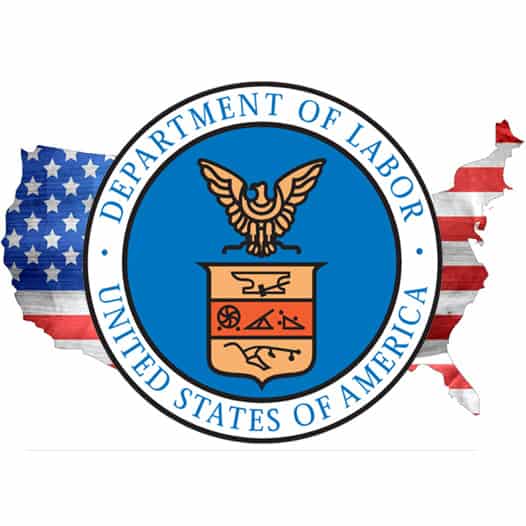
- U.S. Department of Labor’s Office of Workers’ Compensation Programs (OWCP)
- Federal Employees’ Compensation Program
- Longshore and Harbor Workers’ Compensation Program
- Federal Black Lung Program
- Energy Employees Occupational Illness Compensation Program
State-by-State & U.S. Territory External Links
(all links open in new window)
ALABAMA THRU NEBRASKA
- ALABAMA
- ALASKA
- ARIZONA
- ARKANSAS
- CALIFORNIA
- COLORADO
- CONNECTICUT
- DELAWARE
- DISTRICT OF COLUMBIA
- FLORIDA
- GEORGIA
- GUAM
- HAWAII
- IDAHO
- ILLINOIS
- INDIANA
- IOWA
- KANSAS
- KENTUCKY
- LOUISIANA
- MAINE
- MARYLAND
- MASSACHUSETTS
- MICHIGAN
- MINNESOTA
- MISSISSIPPI
- MISSOURI
- MONTANA
- NEBRASKA
NEVADA THRU WYOMING
- NEVADA
- NEW HAMPSHIRE
- NEW JERSEY
- NEW MEXICO
- NEW YORK
- NORTH CAROLINA
- NORTH DAKOTA
- OHIO
- OKLAHOMA
- OREGON
- PENNSYLVANIA
- PUERTO RICO
- RHODE ISLAND
- SOUTH CAROLINA
- SOUTH DAKOTA
- TENNESSEE
- TEXAS
- UTAH
- VERMONT
- VIRGINIA
- WASHINGTON
- WEST VIRGINIA
- WISCONSON
- WYOMING
- Business Workers’ Compensation – Wyoming Dept. of Workforce Services
- Injured Workers Workers’ Compensation – Wyoming Dept. of Workforce Services
- FAQ for Workers
- Claims Overview
- Guide to Workers Compensation in Wyoming (PDF)
- Injured Worker’s Guide to Reporting an Injury (PDF)
- Employer’s Guide for Return to Work Program (PDF)
FREE DOWNLOAD: “13 Research Studies to Prove Value of Return-to-Work Program & Gain Stakeholder Buy-In”
Do not use this information without independent verification. All state laws vary. You should consult with your insurance broker, attorney, or qualified professional.














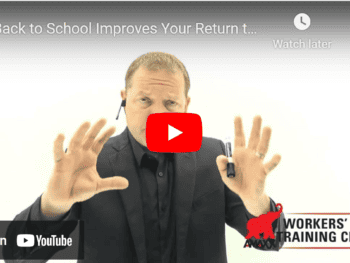








 The Definitive Guide to Return-to-Work Best Practices
The Definitive Guide to Return-to-Work Best Practices How to Coordinate Return-to-Work with ADA Compliance
How to Coordinate Return-to-Work with ADA Compliance WC Mastery: Certified Master of Workers’ Compensation
WC Mastery: Certified Master of Workers’ Compensation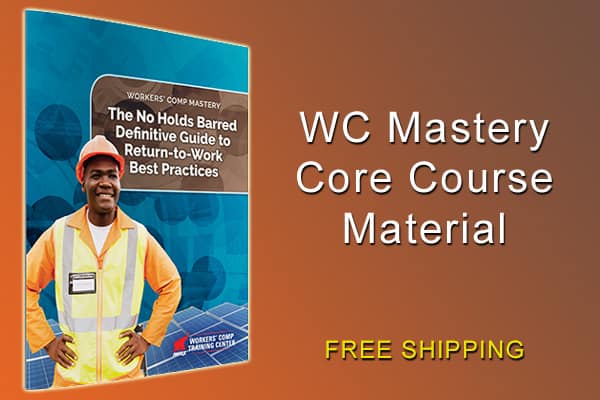 Guidebook: The Definitive Guide to Return-to-Work Best Practices
Guidebook: The Definitive Guide to Return-to-Work Best Practices